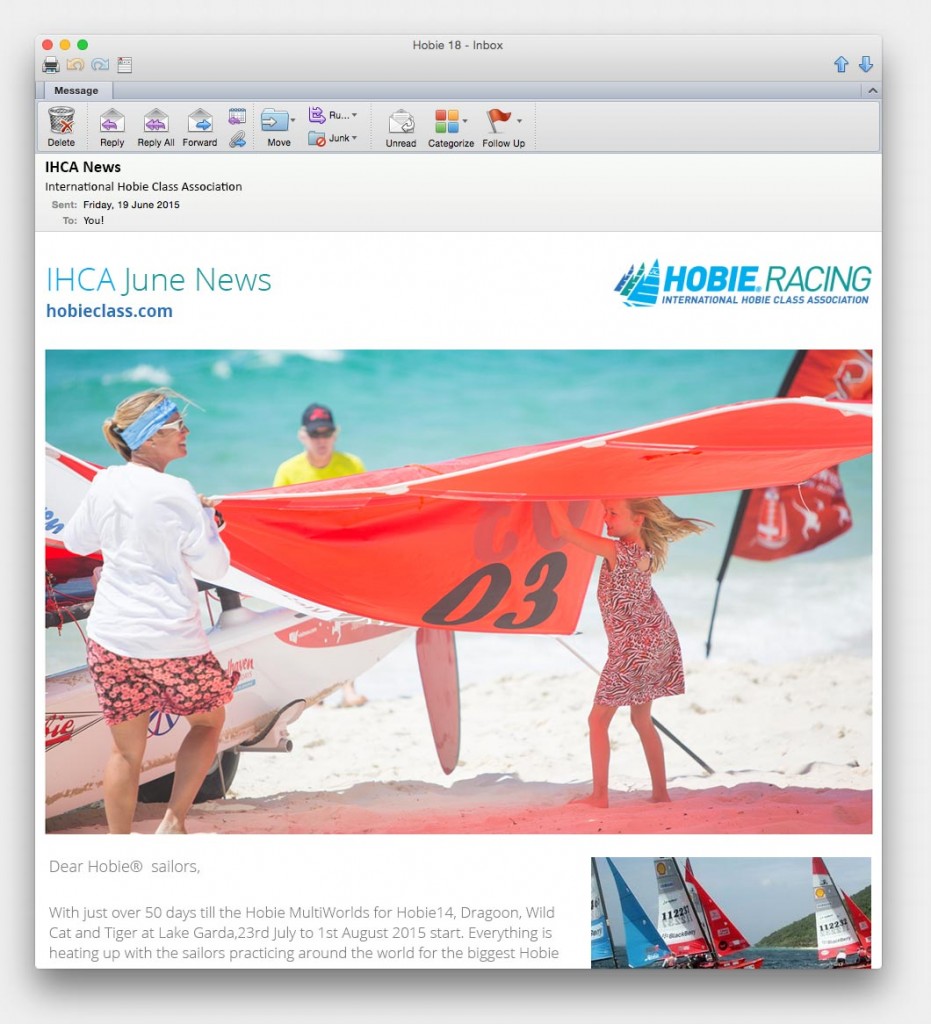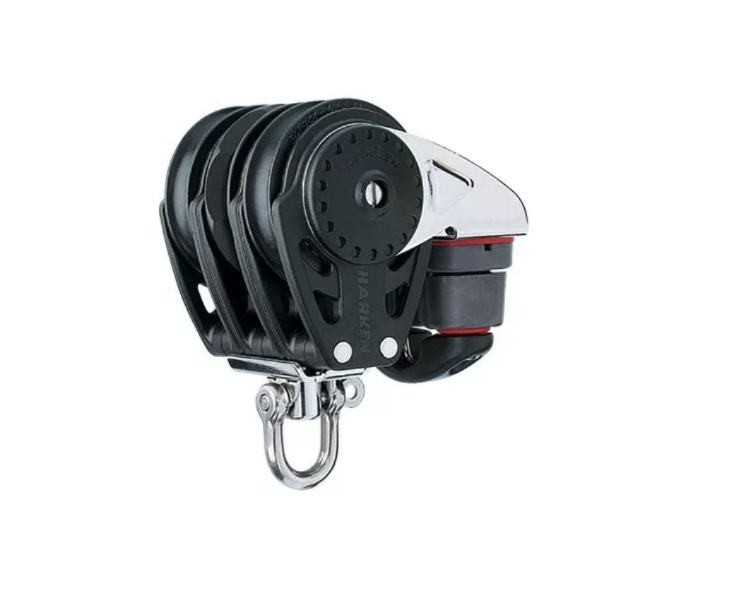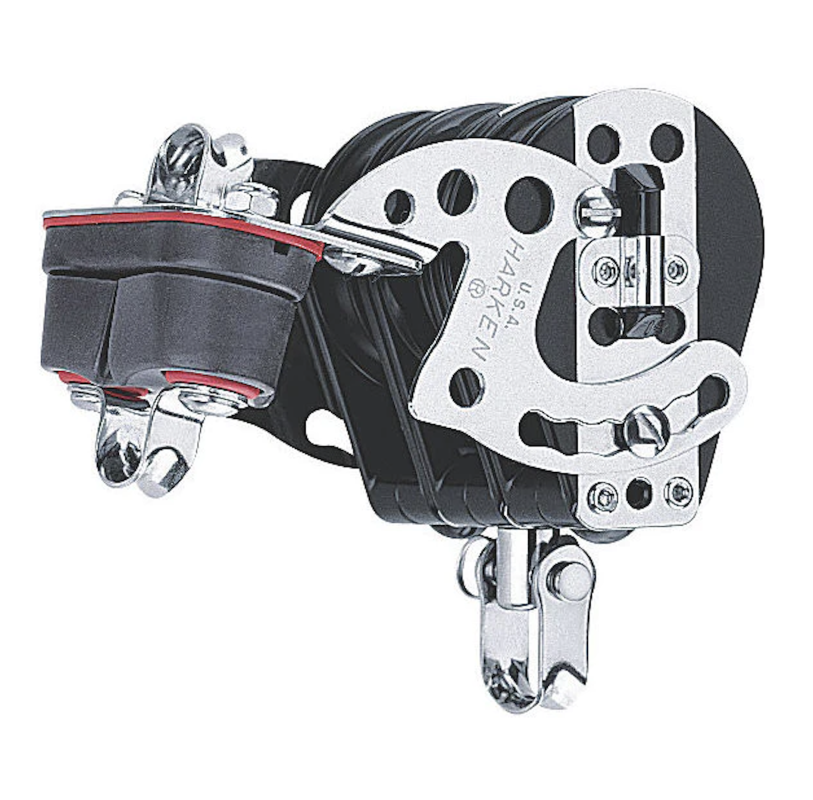The standard Hobie 16 mainsheet system has changed. For many years the standard system was composed of the Harken H194 57mm triple with rachet (lower block) and the Harken H2640 40 mm triple (upper block). This combination worked perfectly and allowed a low stack height. Unfortunately, the H194 lower block has been discontinued by Harken. The H194 actually disappeared from Harken’s catalog years ago but Hobie Cat Co. had a large supply and for some time Hobie Cat Co. was the sole source of the H194, but these are now gone, and a replacement had to be found.
In 2022 boats in North America started coming with the Harken 57 mm triple with rachet H2140, however in Europe they were using Harken 57 mm ratchamatic H2629. My experience with both these blocks is that they work but it is incredibly difficult to get the cleat angle set so that you can cleat the mainsheet from the trapeze in breezy conditions. Despite trying many times, you just couldn’t get it just right. In comparison the discontinued H194 had five cleating positions and it was very easy to find your preferred spot.
In 2022 Steve Fields from Hobie Cat Co. worked with Harken engineers to find a solution and what they came up with is a custom block specifically designed for the Hobie 16. This new block was first introduced at the 2022 Hobie 16 world championships and is now the standard production block on new boats.
On the surface the new block has some similarity to the H2629 but it’s actually a completely different block. The sheave in the new block is metal and has a lot more teeth which significantly increases the holding power. The rachet spring was also customized. We also learned the cleating problem was due to not just the angle but also the distance between the cleat the sheave. To remedy this, the cleat was moved further from the block. The new block also comes with a spliced dyneema loop, this loop creates the tie off point on the side of the block for the end of the mainsheet.
All this sounds great but there is a catch. To adjust the cleat angle there is a central screw that is loosened, the plastic plates on the side pop off allowing you to adjust the cleat to your preferred position. The complication is that there are little pins you must line up with the holes and there is no easy to see visual reference. In practice this won’t be such an issue for your personal boat as you will set it once and be done. Where it’s gets tricky is at the world championships when we are boat swapping. When you swap boats, you have limited time to make adjustments and be ready for the off the beach signal, getting all the little pins to line up when adjusting the cleat angle is not a fast process and the lack of a visual reference makes it harder to see what angle you are setting.
I have added the new block to my personal boat now and will be working these issues out and getting used to it. Stay tuned for a follow up as I get more experience with it.
Rich McVeigh








